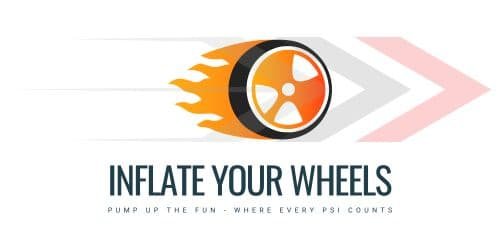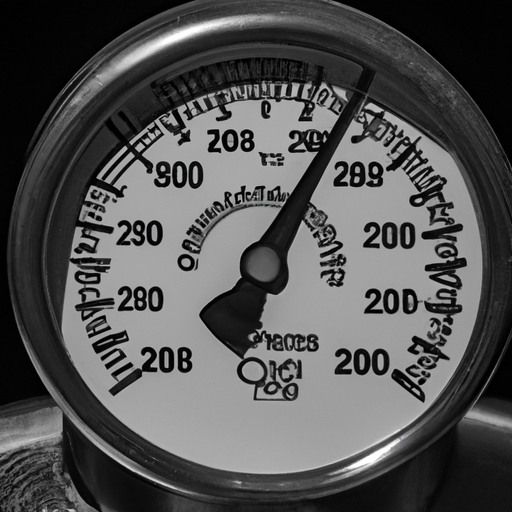Have you ever wondered about the ideal tire pressure for your vehicle? Well, we’ve got some insights for you! In this article, we’ll explore the question of whether inflating your tires to 40 psi is the right choice. Tire pressure plays a crucial role in ensuring optimal performance, fuel efficiency, and safety on the road. So, let’s take a closer look at the benefits and considerations of going for that higher pressure.
Should I Inflate My Tires To 40 Psi?
Table of Contents
Effects of Overinflation
Overinflating your tires can have several negative effects on your vehicle’s performance and safety. The most prominent effect is an increased risk of tire blowout. When a tire is overinflated, the excess air pressure causes the sidewalls of the tire to become stretched and weakened. This makes the tire more susceptible to sudden failure, especially when subjected to harsh road conditions or sudden impacts.
Another consequence of overinflation is uneven tire wear. When the tire is inflated beyond the recommended pressure, the center of the tread bears most of the weight and wears out faster than the edges. This uneven wear pattern can compromise the tire’s grip on the road, leading to reduced traction and decreased safety, particularly in wet or slippery conditions.
Additionally, overinflation can result in elevated ride discomfort. The excessive air pressure creates a rigid and stiff tire, which can translate into a harsher ride quality. This can be particularly noticeable on uneven or bumpy roads, and it can also increase the chances of damage to the tire or suspension components due to the lack of flexibility.
Effects of Underinflation
Underinflating your tires also has its fair share of negative consequences. One of the most significant effects is reduced fuel efficiency. When the tire pressure is too low, the rolling resistance increases, meaning the engine has to work harder and burn more fuel to maintain the desired speed. This can result in decreased gas mileage and increased expenses at the pump.
Another issue with underinflation is decreased handling and stability. When a tire is not properly inflated, it becomes more prone to sidewall flexing and excessive tire squirm. This can lead to reduced responsiveness and control, making it more difficult to steer the vehicle accurately and safely. It can also affect the stability of the vehicle, especially during sudden maneuvers or emergency situations.
Furthermore, underinflation can cause increased tire wear. When a tire is not adequately inflated, the weight distribution becomes uneven, with more weight being borne by the edges of the tire. This can cause the edges to wear down faster, resulting in decreased tire life and the need for premature replacements.
Recommended Tire Pressure
To ensure optimal performance and safety, it is essential to follow the manufacturer’s recommendations for tire pressure. These recommendations can typically be found in the owner’s manual, on a sticker located on the driver’s side door jamb, or in the glove compartment. The recommended tire pressure takes into account factors such as the vehicle’s weight, suspension characteristics, and intended use.
In some cases, you may need to adjust the tire pressure based on specific circumstances, such as changes in load or usage. To find the optimal pressure, you can consult with a tire professional or rely on tire pressure gauges or monitoring systems. It is important to note that the recommended pressure may vary for the front and rear tires, so be sure to check the specific guidelines provided by the manufacturer.
Impacts on Fuel Efficiency
Maintaining the correct tire pressure can have a significant impact on fuel efficiency. When your tires are properly inflated, they roll more easily, resulting in reduced rolling resistance. This means that the engine doesn’t have to work as hard to propel the vehicle forward, leading to improved fuel economy.
However, it is important to strike a balance between tire pressure and comfort. Increasing the pressure beyond the recommended level for the sake of fuel efficiency can result in a stiffer ride and potentially compromise handling and overall comfort. It is crucial to find the optimal pressure that ensures both fuel efficiency and a comfortable driving experience.
Factors to Consider
Several factors should be taken into consideration when determining the optimal tire pressure for your vehicle. One of these factors is the type and weight of your vehicle. Different vehicles have varying weight distributions and suspension characteristics, which can affect the recommended tire pressure. Cars, trucks, SUVs, and motorcycles each have unique requirements, so it is important to consider the specific needs of your vehicle.
Road conditions and climate are also important factors to consider. In colder climates, tire pressure tends to decrease due to the contraction of air molecules. Conversely, in hotter climates, tire pressure may increase due to the expansion of air. Additionally, different road conditions, such as smooth highways or rough off-road terrain, may require adjustments in tire pressure to optimize grip and performance.
Your driving style and preferences should also play a role in determining the optimal tire pressure. If you prioritize a smoother ride, you may opt for a slightly lower pressure. On the other hand, if you frequently drive on curvy roads or prefer a more responsive handling, you may choose a slightly higher pressure. It is important to strike a balance that meets both your comfort and performance needs.
Safety Considerations
Maintaining the proper tire pressure is crucial for ensuring your safety on the road. Underinflated tires are more susceptible to tire blowouts, which can lead to sudden loss of control and accidents. Overinflated tires, on the other hand, can also increase the risk of blowouts due to weakened sidewalls. It is important to regularly check your tire pressure and maintain it within the recommended range to minimize the risk of tire-related accidents.
Proper tire pressure is also essential for emergency handling and braking. When tires are inflated to the correct pressure, they provide optimal traction and grip, allowing for quicker and more precise emergency maneuvers. Incorrect tire pressure can compromise the vehicle’s ability to stop quickly, steer accurately, or maintain stability during sudden avoidance maneuvers.
Tire performance in wet conditions is another crucial safety consideration. Properly inflated tires with adequate tread depth effectively channel water away from the tire surface, reducing the risk of hydroplaning and maintaining traction on wet roads. Underinflated tires are more prone to hydroplaning and decreased grip, increasing the likelihood of accidents, especially in rainy or wet weather conditions.
Tire Lifespan
Maintaining the appropriate tire pressure is not only essential for safety and performance but also for extending the lifespan of your tires. Overinflated tires are more likely to experience premature or irregular wear. The excessive air pressure causes the center of the tread to wear down faster, leading to decreased tire life. On the other hand, underinflated tires wear out more quickly at the edges due to uneven weight distribution, resulting in a shorter overall tire lifespan.
By consistently keeping your tires inflated to the proper pressure, you can help ensure even and consistent wear across the tread. This maximizes the mileage potential of your tires and saves you money in the long run. Regularly checking and adjusting the tire pressure, as recommended by the manufacturer, is a simple yet effective way to prolong the lifespan of your tires.
Tire Pressure Monitoring Systems
Tire Pressure Monitoring Systems (TPMS) play a crucial role in maintaining the correct tire pressure. TPMS continuously monitors the pressure of each tire and alerts the driver when the pressure falls below or exceeds the recommended range. This helps ensure that you always have the correct tire pressure, decreasing the chances of accidents due to underinflation or overinflation.
Proper maintenance and calibration of TPMS are essential for accurate and reliable tire pressure monitoring. It is important to regularly check the battery status, as well as calibrate the system according to the manufacturer’s recommendations. This ensures that the TPMS operates effectively and provides timely warnings in case of any deviations from the desired tire pressure.
Professional Recommendations
When it comes to tire pressure and maintenance, it is always beneficial to seek advice from professionals in the field. Tire manufacturers, mechanics, and technicians have extensive knowledge and experience in tires and can provide valuable recommendations and insights.
Mechanics and technicians often recommend following the manufacturer’s guidelines for tire pressure. They can also provide additional advice specific to your vehicle type and driving conditions. They may suggest adjustments to the recommended pressure based on factors such as load, towing requirements, or specific driving preferences.
Tire manufacturers often provide detailed information about their products, including recommended tire pressure ranges and tips for optimal tire performance and longevity. Checking the manufacturer’s recommendations is essential to ensure you are properly inflating your tires and maximizing their potential.
Understanding Tire Ratings
Tire ratings, such as load index and speed rating, play a significant role in determining the appropriate tire pressure. The load index indicates the maximum weight capacity that a tire can safely carry. It is essential to ensure that the tire pressure is adequate to support the weight of the vehicle and any additional load.
Speed rating indicates the maximum speed capability of the tire while maintaining optimal performance and safety characteristics. Higher speed ratings are often associated with higher tire pressure requirements. It is important to consider both load index and speed rating when determining the optimal tire pressure for your vehicle.
Tire pressure limits are also specified by the manufacturer and should be strictly adhered to. These limits provide guidance on the pressure range within which the tire can safely operate, ensuring maximum performance, stability, and safety.
In conclusion, maintaining the correct tire pressure is crucial for various aspects of vehicle performance, safety, and tire longevity. Overinflation and underinflation can have detrimental effects on tire wear, fuel efficiency, handling, and safety. Following the manufacturer’s recommended tire pressure, considering various factors such as vehicle type, road conditions, and driving preferences, and regularly monitoring tire pressure using TPMS are essential practices to ensure optimal performance and safety on the road.
Consulting with professionals and understanding tire ratings further enhances your knowledge and ability to make informed decisions regarding tire pressure. By taking these steps, you can enjoy a smooth, safe, and efficient driving experience while maximizing the lifespan of your tires.


Keep your car tires in peak condition with the right inflator.
Discovering the best tire inflator can be a game-changer for maintaining your vehicle. Explore our comprehensive Ultimate Guide to the Best Tire Inflators to make an informed decision.

